COVID Alerts
A complete list of blogs related to COVID are accessible on the EFPR Blog and Publication page located HERE. To get updates sent directly to your inbox, please signup HERE.
_______________________________
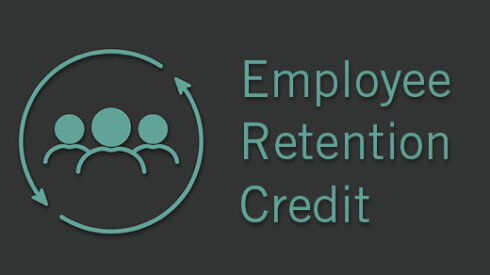







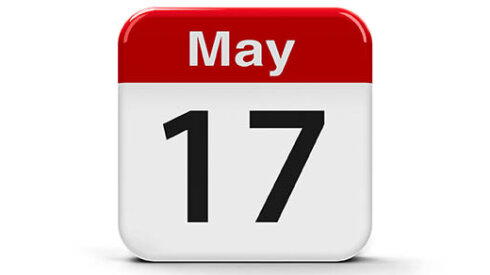
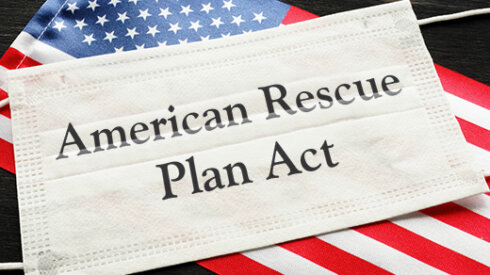

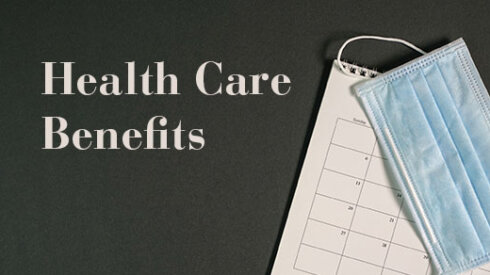
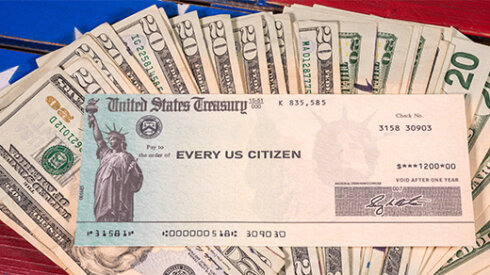
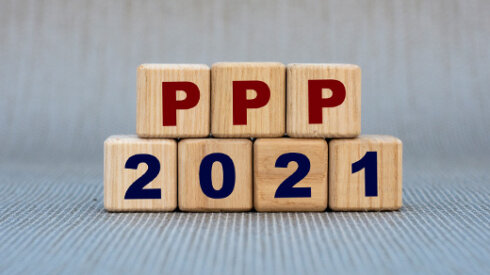
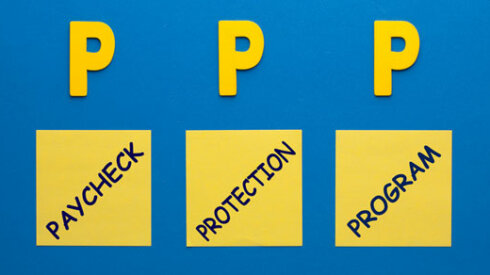

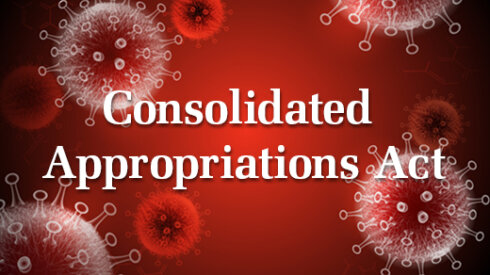





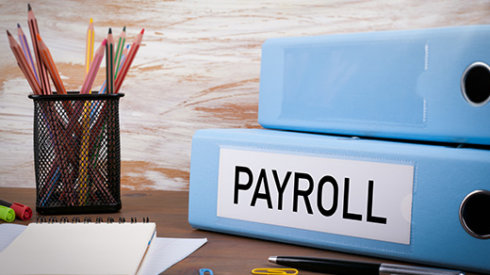
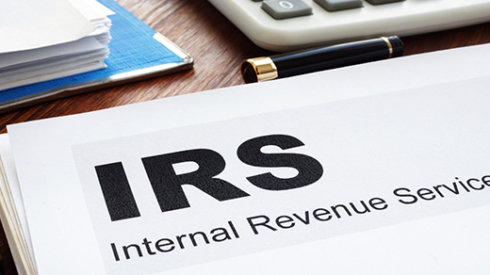

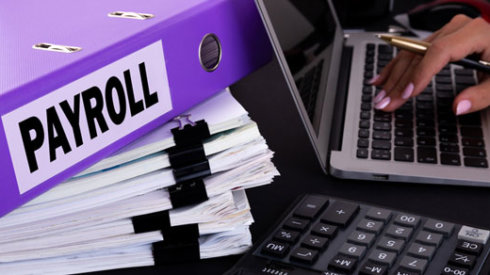
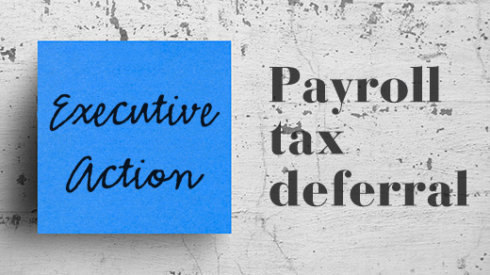



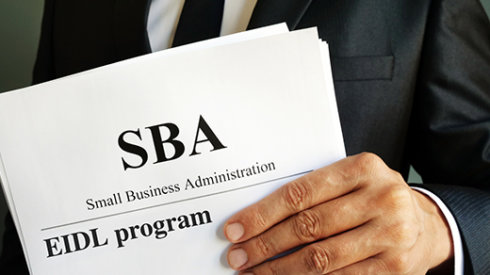

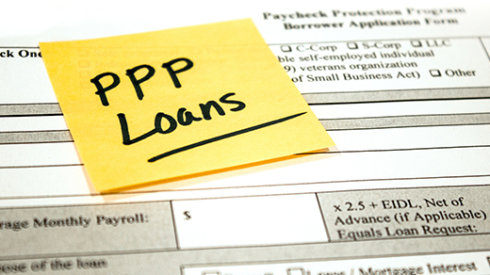
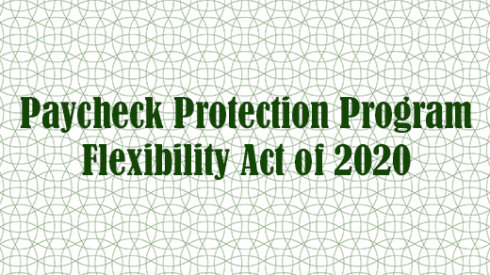
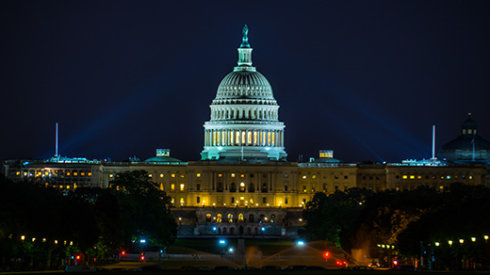
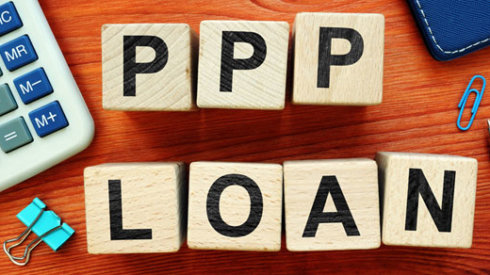



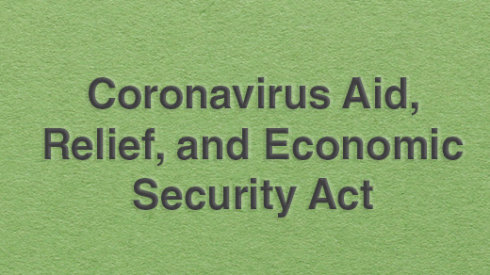
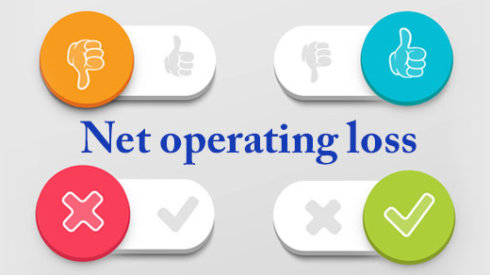

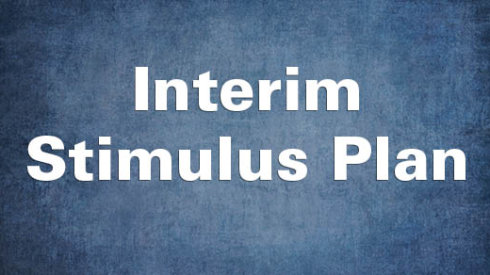
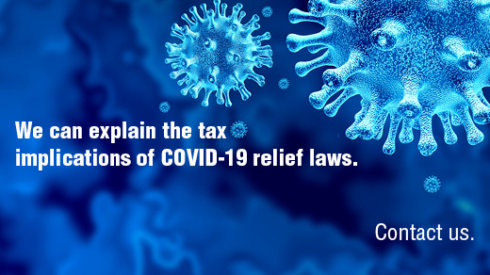
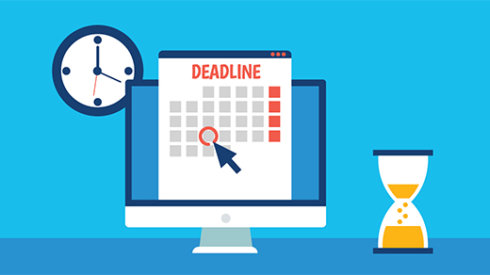







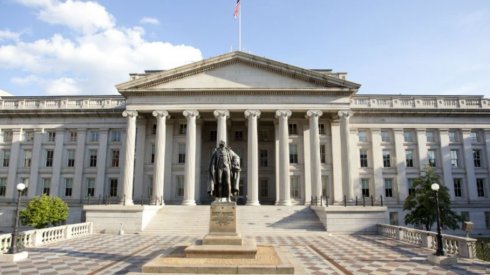



-
Last week, the US Congress passed the Coronavirus Aid, Relief, Economic Security Act (“CARES Act”). Included in this legislation are several resources for small to medium sized business, certain non-profits and other employers.
The CARES Act includes several business and individual provisions that assist during this pandemic. A link to the full EFPR blog about the CARES Act is HERE. A few of the key business takeaways include:
• Creation of $350 Billion Paycheck Protection Program (“PPP”), a loan program with various forgiveness provisions to assist in covering payroll and other expenses thru June 30th, 2020.
• 50% Refundable Payroll tax credit on certain wages during the crisis
• Deferral of Employer Social Security tax payments
• Expansion of NOL carryback provisionsEFPR Group has created an internal Covid-19 Task Force whose sole focus will be:
• Understand the eligibility requirements and benefits of various programs
• Determine how newly created benefits will impact other tax credits and incentives that already exist
• Assist all of our team members in counseling clients about what make sense to themAll loans provided under the PPP loan program will be administered by the SBA, with approved SBA lenders providing the application/underwriting. At this time, PPP loans are not being made. It is anticipated that this will start occurring as soon as the SBA builds out their infrastructure and instructs their network of lenders on how to process and administer. Trust that we are in constant contact with these resources, and that we will be able to assist our clients in this process as needed. Applications for SBA-related grants and disaster loans can be currently filed through their website. However, these funds could adversely impact your ability to have a PPP loan forgiven. Careful consideration must be given before you make a decision.
We have provided a few links to resources as well to assist business owners in gaining an understanding of the landscape.We recommend that you consult your accountant and lender for your best course of action, as everyone’s facts and circumstance differ.
SBA Disaster Assistance
NYS Empire State Development ResourcesAs our client, we will help you navigate the best financial course forward during these uncertain times. Specific guidelines will be issued in the next few weeks and we will keep you informed of new developments that could affect your bottom line.
-
Click HERE for the Stimulus Loan Calculator
-
Governor Cuomo issued an executive order authorizing the Commissioner to provide relief from certain tax filing and payment deadlines, under guidance N-20-2 “Announcement Regarding relief from Certain Filing and Payment Deadlines due to the Novel Coronavirus, COVID-19” which can be found here. Excerpts from the Department of Taxation and Finance notice are below:
The Commissioner has extended the April 15, 2020, due date to July 15, 2020, for New York State personal income tax and corporation tax returns originally due on April 15, 2020.
Except as specified below, this extension applies to returns for individuals, fiduciaries (estate and trusts), and corporations taxable under Tax Law Articles 9, 9-A and 33. In addition, the Commissioner is allowing taxpayers to defer all related tax payments due on April 15, 2020, to July 15, 2020, without penalties and interest, regardless of the amount owed.
Taxpayers do not need to file any additional forms or call the Tax Department to request or apply for this relief. The returns due on April 15, 2020, will automatically be granted the filing and payment deadline extension and relief from penalties and interest. Taxpayers who are due a refund are urged to file as soon as possible.
- 2019 returns due on April 15, 2020, and related payments of tax or installments of tax, including installments of estimated taxes for the 2020 tax year, will not be subject to any failure to file, failure to pay, late payment, or underpayment penalties, or interest if filed and paid by July 15, 2020.
- If you are unable to file your 2019 return by July 15, 2020, you can request an automatic extension to file your return. Your return will be due on October 15, 2020,1 if the extension request is filed by July 15, 2020, and you properly estimate and pay your 2019 tax liability with your extension request.
- Interest, penalties, and additions to tax with respect to such extended tax filings and payments will begin to accrue on July 16, 2020.
- If you already have filed your 2019 return and scheduled your direct debit payment, your direct debit payment will not be automatically rescheduled to occur on July 15, 2020. You must cancel and schedule a new direct debit payment.
Exceptions
- No extension is provided in this notice for the payment or deposit of any other type of state tax, or for the filing of any state information return.
- Remittance of income tax withheld by employers required to be made using Form NYS-1, Return of Tax Withheld, must be made on time.
The entire notice may be found here.
We will keep you updated about any developments. In the meantime, please contact us with any questions or concerns about your tax or financial situation.
-
After extensive negotiations between the U.S. House of Representatives, the U.S. Senate and the White House, an agreement has been reached on a massive stimulus bill to address the financial and health care crisis resulting from the coronavirus (COVID-19) pandemic.
As of this writing, the Coronavirus Aid, Relief, and Economic Security Act (CARES Act) has been passed by the Senate and is expected to be passed by the House, although the mechanics are still to be determined because most House members are currently in their home districts. The President has indicated that he will sign the legislation.
The CARES Act includes a “Marshall Plan” for the health care system to help provide needed treatment during the pandemic and financial assistance to state, local, tribal and territorial governments, as well as to private nonprofits providing critical and essential services. It also provides significant relief to individuals, businesses and other employers to help them weather the pandemic.
Key Provisions
Here’s a quick look at some of the CARES Act provisions that may affect you — keep in mind that it’s possible that some provisions could change before the act is signed into law:
Individuals
- Recovery rebates of up to $1,200 for singles, $1,200 for heads of households and $2,400 for married couples filing jointly — plus $500 per qualifying child — subject to income-based phaseouts starting at $75,000, $122,500 and $150,000, respectively
- Expansion of unemployment benefits, including for self-employed and gig-economy workers
- Waiver of the 10% penalty on COVID-19-related early distributions from IRAs, 401(k)s and certain other retirement plans
- Waiver of required minimum distribution rules for IRAs, 401(k)s and certain other retirement plans
- Expansion of charitable contribution tax deductions
- Exclusion for certain employer payments of student loans
Businesses and other employers
- Retention tax credit for eligible employers that continue to pay employee wages while their operations are fully or partially suspended as a result of certain COVID-19-related government orders
- Deferral of the employer portion of payments of certain payroll taxes
- Modification of net operating loss (NOL) and limitation on losses rules
- Modification of the deduction limitation on business interest
- Qualified improvement property technical correction, allowing qualifying interior improvements of buildings to be immediately expensed rather than depreciated over 15 years
- Expansion of the ways the Small Business Administration (SBA) can help small businesses
More Details to Come
This is just a brief overview of the CARES Act. We will share additional details on the provisions that are likely most relevant to you or your business in the coming days.
In the meantime, we have been receiving frequent questions about the SBA Economic Injury Disaster Loan Program and wanted to share some of those details below.
SBA Economic Injury Disaster Loan Program
- For Profit and Not-for-Profit organizations are eligible
- Up to 30 years amortization
- Less than $25,000 with no collateral to up to $2 Million
- 2.75% for Not-for-Profits and 3.75% for For Profits
- Must be in business 1 full year and located in a disaster area
- It takes a few months for approval
- For more information, please go to the SBA.gov site located here.
-
Members of our COVID team presented on the following topics:
• Managing Cash Flow
• Tax Due Dates
• Government Incentive Programs
• Human Resource Issues
• Managing Staff RemotelyA link to the power point presentation can be found here.
A link to the recorded Go To Meeting presentation can be found here.
A link to the SBA Economic Injury Disaster Loan Program may be found here.
-
Every company has faced unprecedented challenges in adjusting to life following the widespread outbreak of the coronavirus (COVID-19). Small businesses face particular difficulties in that, by definition, their resources — human, capital and otherwise — are limited. If this describes your company, one place you can look to for some assistance is the Small Business Administration (SBA).
New Loan, Relaxed Criteria
The agency has announced that it’s offering Economic Injury Disaster Loans under the Coronavirus Preparedness and Response Supplemental Appropriations Act, which was recently signed into law.Here’s how it works: The governor of a state or territory must first submit a request for Economic Injury Disaster Loan assistance to the SBA. The agency’s Office of Disaster Assistance then works with the governor to approve the request. Upon completion of this process, affected small businesses within the state gain access to information on how to apply for loan assistance.
To speed the process, the SBA has relaxed its usual disaster-loan criteria. A state or territory now needs to certify that at least five small businesses have suffered substantial economic injury anywhere in the state.
Previously, at least one of the companies had to be in each of the disaster-declared counties or parishes.
Along similar lines, once the submission process is completed, Economic Injury Disaster Loans will be available across the state. Under previous criteria, only businesses in counties identified as disaster areas could obtain financial assistance. Given the expected widespread and economically drastic effect of the coronavirus, most states will have likely garnered approval by the time you read this.
Amount, Interest and Terms
Economic Injury Disaster Loans offer up to $2 million in financial assistance to help small businesses mitigate their revenue losses. You could use the money to pay overhead costs such as utilities and rent, keep up with accounts payable and cover payroll.For qualifying small businesses, the interest rate is 3.75%. Some nonprofits may also be eligible for this assistance. For them, the interest rate is 2.75%. The specific loan terms will vary according to each borrower’s ability to pay. The agency does say that it “offers loans with long-term repayments in order to keep payments affordable.”
Mitigate and Manage
Bear in mind that these loans are just one form of assistance offered by the SBA. Your small business may qualify for other loans, and there might be training programs that benefit your company. Our firm can help you assess your financial situation in light of the coronavirus crisis and formulate a strategy for mitigating and managing your risks going forward.© 2020
-
Taxpayers now have more time to file their tax returns and pay any tax owed because of the coronavirus (COVID-19) pandemic. The Treasury Department and IRS announced that the federal income tax filing due date is automatically extended from April 15, 2020, to July 15, 2020.
Taxpayers can also defer making federal income tax payments, which are due on April 15, 2020, until July 15, 2020, without penalties and interest, regardless of the amount they owe. This deferment applies to all taxpayers, including individuals, trusts and estates, corporations and other non-corporate tax filers as well as those who pay self-employment tax. They can also defer their initial quarterly estimated federal income tax payments for the 2020 tax year (including any self-employment tax) from the normal April 15 deadline until July 15.
No Forms to File
Taxpayers don’t need to file any additional forms to qualify for the automatic federal tax filing and payment relief to July 15. However, individual taxpayers who need additional time to file beyond the July 15 deadline, can request a filing extension by filing Form 4868. Businesses who need additional time must file Form 7004. Contact us if you need assistance filing these forms.If You Expect a Refund
Of course, not everybody will owe the IRS when they file their 2019 tax returns. If you’re due a refund, you should file as soon as possible. The IRS has stated that despite the COVID-19 outbreak, most tax refunds are still being issued within 21 days.New Law Passes, Another on the Way
On March 18, 2020, President Trump signed the “Families First Coronavirus Response Act,” which provides a wide variety of relief related to COVID-19. It includes free testing, waivers and modifications of Federal nutrition programs, employment-related protections and benefits, health programs and insurance coverage requirements, and related employer tax credits and tax exemptions.If you’re an employee, you may be eligible for paid sick leave for COVID-19 related reasons. Here are the specifics, according to the IRS:
- An employee who is unable to work because of a need to care for an individual subject to quarantine, to care for a child whose school is closed or whose child care provider is unavailable, and/or the employee is experiencing substantially similar conditions as specified by the U.S. Department of Health and Human Services can receive two weeks (up to 80 hours) of paid sick leave at 2/3 the employee’s pay.
- An employee who is unable to work due to a need to care for a child whose school is closed, or child care provider is unavailable for reasons related to COVID-19, may in some instances receive up to an additional ten weeks of expanded paid family and medical leave at 2/3 the employee’s pay.
As of this writing, Congress was working on passing another bill that would provide additional relief, including checks that would be sent to Americans under certain income thresholds. We will keep you updated about any developments. In the meantime, please contact us with any questions or concerns about your tax or financial situation.
© 2020
-
Businesses across the country are being affected by the coronavirus (COVID-19). Fortunately, Congress recently passed a law that provides at least some relief. In a separate development, the IRS has issued guidance allowing taxpayers to defer any amount of federal income tax payments due on April 15, 2020, until July 15, 2020, without penalties or interest.
New Law
On March 18, the Senate passed the House’s coronavirus bill, the Families First Coronavirus Response Act. President Trump signed the bill that day. It includes:• Paid leave benefits to employees,
• Tax credits for employers and self-employed taxpayers, and
• FICA tax relief for employers.Tax Filing and Payment Extension
In Notice 2020-18, the IRS provides relief for taxpayers with a federal income tax payment due April 15, 2020. The due date for making federal income tax payments usually due April 15, 2020 is postponed to July 15, 2020.Important: The IRS announced that the 2019 income tax filing deadline will be moved to July 15, 2020 from April 15, 2020, because of COVID-19.
Treasury Department Secretary Steven Mnuchin announced on Twitter, “we are moving Tax Day from April 15 to July 15. All taxpayers and businesses will have this additional time to file and make payments without interest or penalties.”
Previously, the U.S. Treasury Department and the IRS had announced that taxpayers could defer making income tax payments for 2019 and estimated income tax payments for 2020 due April 15 (up to certain amounts) until July 15, 2020. Later, the federal government stated that you also don’t have to file a return by April 15.
Of course, if you’re due a tax refund, you probably want to file as soon as possible so you can receive the refund money. And you can still get an automatic filing extension, to October 15, by filing IRS Form 4868. Contact us with any questions you have about filing your return.
Any Amount Can Be Deferred
In Notice 2020-18, the IRS stated: “There is no limitation on the amount of the payment that may be postponed.” (Previously, the IRS had announced dollar limits on the tax deferrals but then made a new announcement on March 21 that taxpayers can postpone payments “regardless of the amount owed.”)In Notice 2020-18, the due date is postponed only for federal income tax payments for 2019 normally due on April 15, 2020 and federal estimated income tax payments (including estimated payments on self-employment income) due on April 15, 2020 for the 2020 tax year.
As of this writing, the IRS hasn’t provided a payment extension for the payment or deposit of other types of federal tax (including payroll taxes and excise taxes).
Contact Us
This only outlines the basics of the federal tax relief available at the time this was written. New details are coming out daily. Be aware that many states have also announced tax relief related to COVID-19. And Congress is working on more legislation that will provide additional relief, including sending checks to people under a certain income threshold and providing relief to various industries and small businesses.We’ll keep you updated. In the meantime, contact us with any questions you have about your situation.
© 2020
-
President Trump has signed into law the Families First Coronavirus Response Act. Among other things, the new law temporarily requires certain employers to provide expanded paid sick and family leave for employees affected by the coronavirus (COVID-19) pandemic.
Employers’ increased costs will be offset by new tax credits, which also may be available to self-employed individuals.
Expanded Family and Medical Leave
The new law amends the federal Family and Medical Leave Act (FMLA) for employers with fewer than 500 employees. Those employers generally must provide employees who’ve been on the job for at least 30 calendar days (including those who work under a multiemployer collective agreement and whose employers pay into a multiemployer plan) with up to 12 weeks of job-protected leave, part of it paid.The new law generally allows the leave in circumstances where an employee is unable to work (or “telework”) due to a need to care for a minor child whose school or paid place of childcare has been closed or is unavailable due to COVID-19.
The FMLA generally requires only job-protected leave, not paid leave. For leave under the new law, only the first 10 days of leave may be unpaid. (Those 10 days might, however, qualify for paid sick leave; see below.)
After 10 days, covered employers must provide paid leave at two-thirds of an employee’s usual rate. The pay requirement is limited, however, to $200 per day and $10,000 total per employee.Be aware that certain exemptions and special rules may apply regarding expanded family and medical leave.
Paid Sick Leave
Under the new law, employers with fewer than 500 employees must provide 80 hours of paid sick leave for full-time employees in certain situations. Part-time employees are entitled to this paid sick leave for the average number of hours worked over a two-week period.Employees are eligible regardless of how long they’ve worked with the employer, and employers can’t require an employee to use other paid leave before the paid sick time.
An employee qualifies for the leave when he or she is unable to work (or telework) because the employee:
- Is subject to a COVID-19-related quarantine or isolation order,
- Has been advised by a health care provider to self-quarantine,
- Is experiencing COVID-19 symptoms and seeking a medical diagnosis,
- Is caring for an individual subject to a COVID-19-related quarantine or isolation order,
- Is caring for a son or daughter whose school or place of care has been closed, or whose childcare provider is unavailable, due to COVID-19 precautions, or
- Is experiencing substantially similar conditions specified by the U.S. Secretary of Health and Human Services Alex Azar.
When leave is taken for an employee’s own illness or quarantine (reasons 1 through 3 above), the leave is required to be paid at the employee’s regular rate, but no higher than $511 per day ($5,110 total). For leave taken for reasons 4 through 6 above, the leave is required to be paid at two-thirds of the regular rate, capped at $200 per day ($2,000 total).
Note that certain exemptions and special rules may apply regarding paid sick leave.
Tax Credits for Employers and the Self-Employed
Covered employers generally can take a federal payroll tax credit for 100% of the qualified family and sick leave wages they pay each quarter. The credits generally are available only to employers required to provide benefits by the new law.The amount of wages taken into account for the paid family leave for each employee is capped at $200 per day and $10,000 for all calendar quarters. The amount of wages taken into account for paid sick leave is limited to $511 per day for leave taken for the employee’s own illness or quarantine and $200 for leaves taken to care for others.
Wages taken into account when computing the credit amount won’t be taken into account when computing the existing Section 45S business tax credit for paid family and medical leave.
Note that tax credits may also be available to certain self-employed individuals.
Effective Dates
The new law provides that the paid leave provisions must take effect no later than 15 days after enacted. They expire on December 31, 2020. More relief affecting employees and businesses is sure to follow this legislation. Turn to us to for the latest developments.© 2020
-
The U.S. Small Business Administration has provided a low-interest disaster loans to help businesses and homeowners recover from declared disasters. For more information please follow this link: https://www.sba.gov/funding-programs/disaster-assistance
-
U.S. Treasury Department Secretary Steven Mnuchin announced that the 2019 income tax filing deadline will be moved to July 15, 2020 from April 15, 2020, because of the coronavirus (COVID-19) outbreak.
At President Trump’s direction, Mnuchin announced on Twitter, “we are moving Tax Day from April 15 to July 15. All taxpayers and businesses will have this additional time to file and make payments without interest or penalties.”
Previously, the U.S. Treasury Department and the IRS had announced that taxpayers could defer making income tax payments for 2019 and estimated income tax payments for 2020 due April 15 (up to certain amounts) until July 15, 2020. Now, the federal government is stating that you don’t have to file a return by April 15.
Of course, if you’re due a tax refund, you probably want to file as soon as possible so you can receive the refund money. Contact us with any questions you have about filing your return.
© 2020
-
After U.S. Treasury Secretary Steven Mnuchin’s announcement that the deadline for paying federal income taxes would be extended, the IRS released guidance on March 18 outlining the details. IRS Notice 2020-17 follows up on President Trump’s Emergency Declaration that, among other things, instructed Mnuchin to provide relief from tax deadlines for taxpayers adversely affected by the coronavirus (COVID-19) pandemic.
According to the notice, Mnuchin has determined that any person with a federal income tax payment due April 15, 2020, is affected by COVID-19 for purposes of the relief. The notice doesn’t extend the federal tax return filing deadline, only the deadline for making payments. Bear in mind, too, that states aren’t necessarily following suit regarding state income tax payments (although many states have announced their own COVID-19 tax relief).Postponed payments
Under the notice, the due date for making federal income tax payments up to applicable limits is postponed to July 15, 2020. The limit for each consolidated group or corporation that doesn’t file a consolidated return is $10 million. For all other taxpayers, the applicable limit is $1 million, regardless of filing status. In other words, the $1 million tax limit applies equally to a single individual and to married individuals filing a joint return.The relief is limited to federal income tax payments due on April 15 for the 2019 tax year and federal estimated income tax payments for the 2020 tax year that are due on April 15. It includes tax payments on self-employed income.
Penalties and interest
The notice also provides that no interest, penalty or additions to tax for failure to pay will be calculated on the postponed taxes for the period from April 15, 2020 to July 15, 2020. They will, however, begin to accrue on April 15 for payments in excess of the applicable limit ($10 million or $1 million) that aren’t paid by April 15.Taxpayers who find themselves subject to such penalties or additions can seek reasonable cause relief for a failure to pay tax. They also can seek a waiver to the penalty for a failure to pay estimated income tax (the latter relief generally is limited to individuals and certain trusts or estates; it’s not available for corporations or nonprofits).
Turn to us with questions
Federal measures to mitigate the economic effects of the COVID-19 pandemic continue to roll out. We can help you stay on top of these developments and chart the best course forward.© 2020
-
Several arms of the federal government have taken, or are weighing, significant steps to help the country deal with the spread of the coronavirus (COVID-19) and the implications for individuals and businesses.
On March 14, the U.S. House of Representatives overwhelmingly passed a bipartisan 110-page bill that has received support from President Trump and, as of this writing, is expected to be taken up by the Senate this week. The Families First Coronavirus Response Act includes a wide range of provisions, including some addressing insurance coverage and reimbursement of diagnostic testing costs and others expanding safeguards for economically disadvantaged individuals. It also includes two significant groups of measures that will affect certain employers and workers through December 31, 2020.
Expanded Family and Medical Leave
The act amends the Family and Medical Leave Act (FMLA) for employees who 1) work for employers with fewer than 500 employees, and 2) have been on the job at least 30 days. Under the bill, these employees (including those who work under a multiemployer collective agreement and whose employers pay into a multiemployer plan) will have the right to take up to 12 weeks of job-protected leave to:- Comply with a requirement or recommendation to quarantine due to exposure or symptoms of COVID-19,
- Care for an at-risk family member who’s quarantined due to exposure or symptoms of COVID-19, and
- Care for their children if the children’s school or place of care has been closed, or the childcare provider is unavailable, because of COVID-19.
Although the FMLA generally requires only job-protected leave — not paid leave — the bill mandates paid leave after 14 days at two-thirds of the employee’s usual rate. (The first 14 days are covered under the paid sick leave provisions discussed below).
Note, though, that the bill gives the U.S. Secretary of Labor the power to issue regulations that exempt small businesses with fewer than 50 employees from this expansion if it would jeopardize the viability of the business. Because of this potential exemption and the fact that these provisions don’t apply to employers with 500 or more employees, many American workers won’t be protected by them.
The act will help employers subject to the provisions by allowing them to take a tax credit against their share of Social Security taxes for 100% of the qualified family leave wages they pay each quarter. The amount of wages taken into account for each employee is capped at $200 per day and $10,000 for all calendar quarters. Any excess credit over its Social Security tax liability is refundable to the employer.
No deduction is allowed for the amount of the credit, and no credit is allowed for wages that are subject to the existing Section 45S business tax credit for paid family and medical leave. Employers can elect to not have the credit apply.
The 100% refundable family leave credit also is available for certain self-employed individuals, applicable against income taxes. Self-employed people who would be entitled to paid leave under the expanded FMLA if they were employees of a business are eligible. The qualified leave amount is capped at the lesser of $200 per day or the average daily self-employment income for the taxable year per day.
These individuals can count only those days they’re unable to work for reasons covered by the expanded FMLA. The Treasury Department will establish documentation requirements.
Paid Sick Leave
The act requires employers with fewer than 500 employees to provide two weeks of paid sick leave, at the employee’s regular rate, to quarantine or seek a diagnosis or preventive care for COVID-19. If the employee must take leave to care for a family member for such purposes, or to care for a child whose school has closed or childcare provider isn’t available, these employees must provide leave paid at two-thirds of the employee’s regular rate. Full-time employees are entitled to 80 hours of paid sick leave, and part-time employees are entitled to the typical number of hours that they work in a typical two-week period.As with expanded family leave, covered employers can claim an elective refundable 100% tax credit for qualified paid sick leave wages, also against Social Security taxes. But the bill makes a distinction between those wages paid for employee who must self-isolate or obtain a diagnosis and those paid for to employees caring for a family member or child. For the former, the amount of wages taken into account per employee is capped at $511 per day; for the latter, it’s capped at $200 per day. The total number of days taken into account per employee can’t exceed the excess of 10 over the total number of days taken into account for all preceding calendar quarters.
Again, any excess credit over their Social Security tax liability is refundable, no deduction is allowed for the amount of the credit and no credit is allowed for wages that are subject to the Section 45S business tax credit.
The self-employed are similarly eligible for the refundable credit at differing amounts — 100% for their personal needs and 67% to care for a family member or child. The amount of wages is capped at $511 per day or the average daily self-employment income for the taxable year per day.
Extended Tax Filing Deadline
The U.S. Department of Treasury has announced an extension on the traditional April 15 federal income tax return filing deadline for certain individuals and small businesses. Not only will eligible taxpayers be permitted to file their returns later, they also need not worry about incurring penalties or interest if they don’t pay by the April 15 deadline.According to Treasury Secretary Steven Mnuchin, “virtually all Americans, other than the super rich,” can take advantage of the delay. Taxpayers already generally can obtain extensions that push out their filing deadlines six months. But without the relief, those taxpayers still are required to pay any tax liability by the April deadline. That liability incurs penalties and interest until paid.
At this writing, we don’t have information about when the new filing deadline will be.
Other Relief
Some states have announced tax relief related to COVID-19. Check with us for more information.On March 13 as part of the national emergency declaration, President Trump waived interest payments on federal student loans “until further notice.” This allows borrowers to pause their payments without penalty.
It remains to be seen whether any relief will be provided regarding the quarterly estimated tax payments made by businesses and self-employed individuals. And, as of this writing, no further information, such as the new deadline, has been provided. An extension isn’t included in the Families First Coronavirus Response Act.
HDHP Coverage
The IRS has published new guidance making clear that high-deductible health plans (HDHPs) can pay for COVID-19-related testing and treatment without putting their status at risk. That means individuals with HDHPs that provide such coverage can continue to contribute to their health savings accounts (HSAs) and deduct the contributions on their 2020 tax returns (or make pre-tax contributions their employer-sponsored HSAs).Health insurance plans generally must satisfy several requirements to qualify as an HDHP. For example, providing nonpreventive health care coverage without a deductible, or with a deductible below the requisite minimum, would forfeit HDHP status. (Vaccinations are considered preventive care.) The IRS is temporarily suspending this rule to avoid administrative delays or other financial disincentives that could impede testing and treating for COVID-19.
Stay Tuned
Congress and the Trump administration are weighing other actions to increase access to health care, as well as stabilize and stimulate the economy. We’ll keep you updated as new relief becomes available. Contact us for help to determine how best to minimize the financial impact.© 2020
-
The America Institute of CPAs’ (AICPA) called for the Treasury Department and the IRS to provide relief to all taxpayers in light of the uncertainty and challenges caused by the spread of the Coronavirus (COVID-19) pandemic. They requested Treasury and the IRS consider the following recommendations here.
Other EFPR Resources
For more information call
800.546.7556


